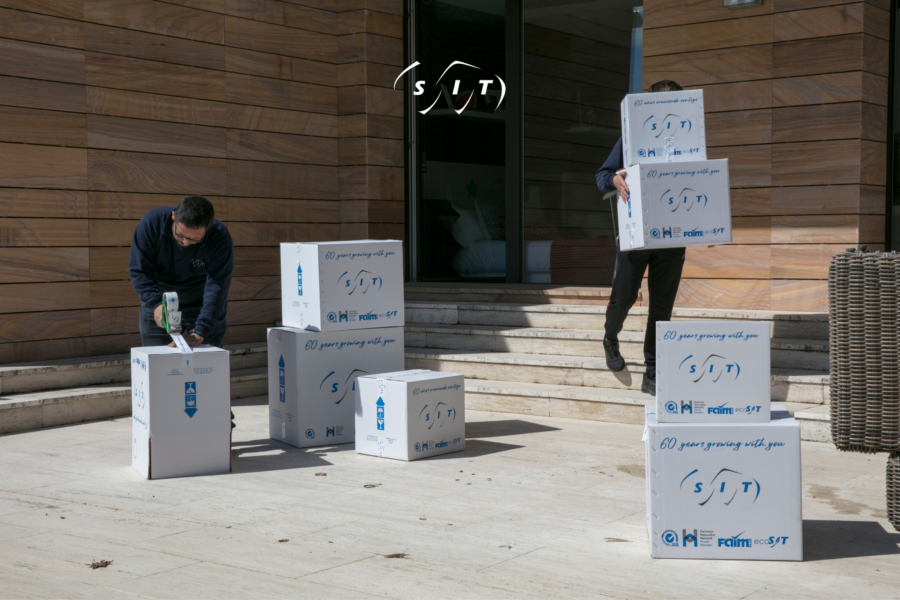
Moving can be a hectic time, and keeping track of all your belongings adds another layer of complexity. Ensuring things don’t get lost in the shuffle requires meticulous planning and a keen eye for detail. This blog post will serve as a crucial guide as you prepare for your next move. We’ll explore effective strategies, from initial organization to the final check post-move. Embrace these tips and transform your moving experience into a well-organized, hassle-free process. Our goal? To help you move without losing sight of a single item. Welcome to your ultimate guide to keeping track of everything during a move!
The Challenges of Moving
Moving homes can be a daunting task, filled with unexpected hurdles and stress. First, time constraints often pressurize the process. People usually find themselves racing against the clock to pack and organize everything. This rush increases the likelihood of misplacing items. In addition, the sheer volume of belongings can overwhelm even the most organized individuals. Sorting through years of accumulation, deciding what to keep, and packing everything can be monumental.
Emotional stress also plays a significant role. Leaving a familiar place full of memories can distract from the task at hand. This emotional turmoil can lead to forgetfulness and disorganization, raising the risk of losing items. Recognizing these challenges is crucial. It prepares you for a more organized approach, reducing the chances of anything going missing during the move. Understanding these obstacles sets the stage for effective strategies to keep your belongings safe and accounted for.

Pre-Move Organization
Embarking on a move can often lead to the fear that things might get lost in the shuffle. To counter this, effective pre-move organization is key. Start by decluttering, which is essential for a smooth transition. Ask yourself if each item sparks joy, serves a purpose, or holds sentimental value. Suppose it doesn’t consider selling, donating, or discarding it. This process eases packing and ensures your new space stays clutter-free.
Beginning this process well ahead of time offers significant benefits. An early start minimizes last-minute chaos, allowing you to sort belongings methodically. This approach also eases the stress of hurried decisions about what to keep. As you declutter, create a categorized inventory of items to retain. That becomes crucial later, as you’ll have a list when unpacking, too, making it easier to notice if something is missing.
The goal is to ensure that things don’t get lost, both in the physical sense and in terms of importance. Systematic evaluation of your possessions and starting this task early pave the way for an organized, efficient move. The reassurance of knowing everything is accounted for and having a list when unpacking is invaluable.
Inventory Creation and Management
Creating a detailed inventory for your move is very important. Start by listing items room-by-room. This systematic approach not only keeps things organized but also makes unpacking easier. In your living room, for instance, catalog every item, from sofas to picture frames. Repeat this process for each room, ensuring no item goes unnoticed.
Embrace technology to streamline your inventory management. Numerous apps and software tools are available to simplify this task. Use these platforms to categorize items by room, note their condition, and even attach photos for reference. This digital record is invaluable for tracking your belongings and also provides a clear overview at a glance. Plus, it’s accessible anywhere, adding convenience to your moving process.
Remember, a thorough inventory is your roadmap to a successful move. It guides you in packing, moving, and unpacking, ensuring everything arrives at your new home.

Packing Strategies
Packing for a move can feel overwhelming, yet with strategic planning, it becomes manageable. Begin by focusing on one room at a time. This method keeps you organized and prevents confusion. For each room, pack items together and label boxes clearly. Include both the room name and a brief description of the contents.
For safe transportation, Beltway Movers suggests using sturdy, high-quality boxes and avoiding old or damaged containers that might collapse or tear. Also, wrap fragile items individually in bubble wrap or packing paper. Secure these items in separate boxes, clearly marked as “Fragile.”
Labeling plays a crucial role. Develop a system that works for you, like color-coding or numbering. This approach simplifies tracking and unpacking. Place labels on box sides, not tops. This way, you can easily identify them even when stacked.
Valuable items need special attention. Consider separate, well-marked containers for them. For extra security, keeping these valuables with you is recommended instead of sending them in the moving truck.
Lastly, don’t rush the packing process. Take your time to pack and label each box carefully. This diligence pays off, ensuring a smooth unpacking process at your new home.
During the Move
Firstly, prepare an essentials box. That should contain items you’ll need immediately at your new home, like toiletries, a change of clothes, and important documents. Keep this box with you at all times. Secondly, while loading and unloading, maintain a checklist. As each box gets moved, tick it off the list. This step will keep you updated on what’s been transported and what’s left. Lastly, assign specific tasks to family members or movers. Minimizing the risk of misplacing items is achievable by having everyone focus on different aspects. You’ll keep your belongings safe and accounted for by staying vigilant and organized.

Post-Move Checks
Now that you’ve settled into your new space, it’s time for some essential post-move checks. Firstly, approach unpacking systematically; start with essentials and gradually move to less urgent items. This method helps you easily spot if something’s missing. Keep your inventory list handy; cross-check each item as you unpack. In case of discrepancies, quickly refer back to your list. If an item appears missing, don’t panic. Sometimes, things end up in unexpected boxes. However, if you still can’t find it, consider retracing your steps or contacting your movers. A little diligence goes a long way in ensuring all your belongings are safe and accounted for.
Closing Thoughts on Making Sure Things Don’t Get Lost
In wrapping up, it’s crucial to emphasize that meticulous planning and execution can make all the difference in ensuring that things don’t get lost during a move. You can keep track of all your belongings with the right strategies, from decluttering to labeling and systematic unpacking. Adopting these methods turns a potentially chaotic experience into an organized, manageable task. The key to a successful move lies in staying ahead of the chaos. So, employ these tips, and watch as the fear of losing items fades, replaced by the satisfaction of a well-executed move. Stay organized, stay informed, and most importantly, stay calm – your belongings will thank you!